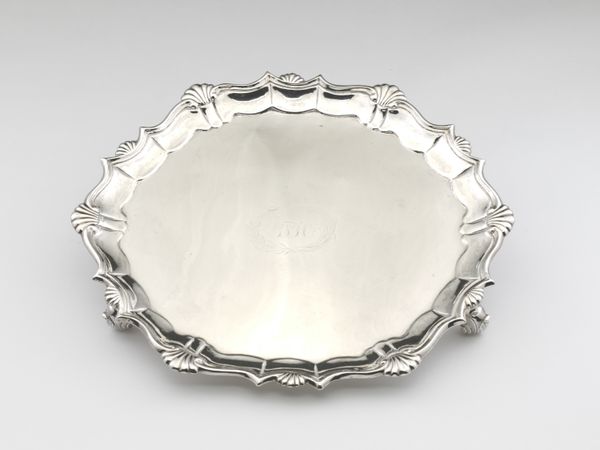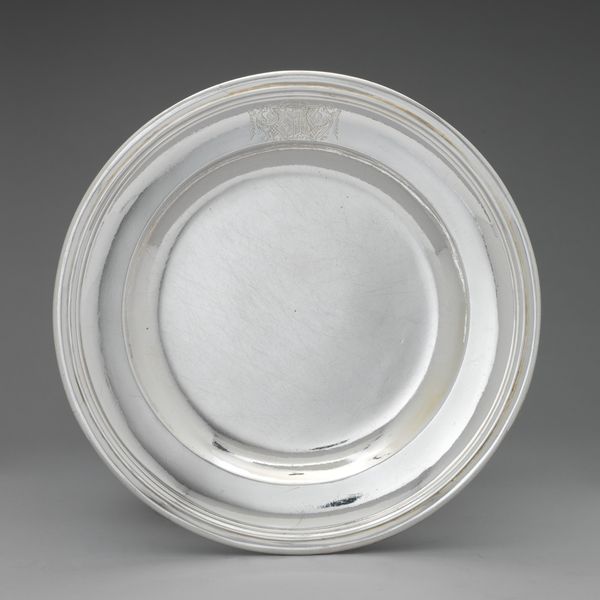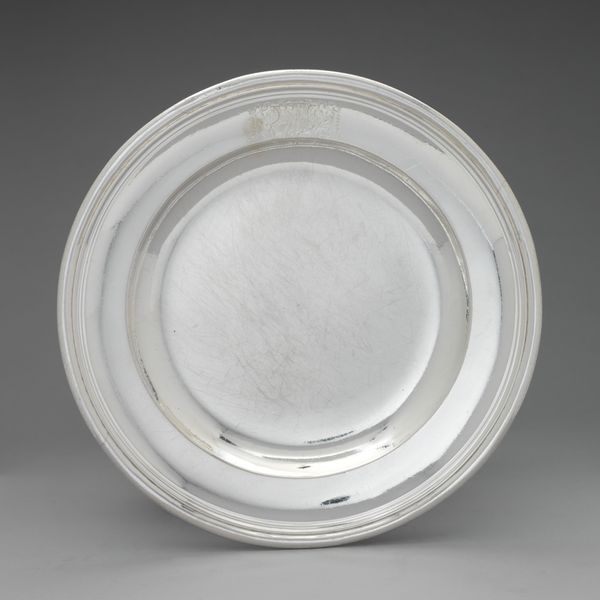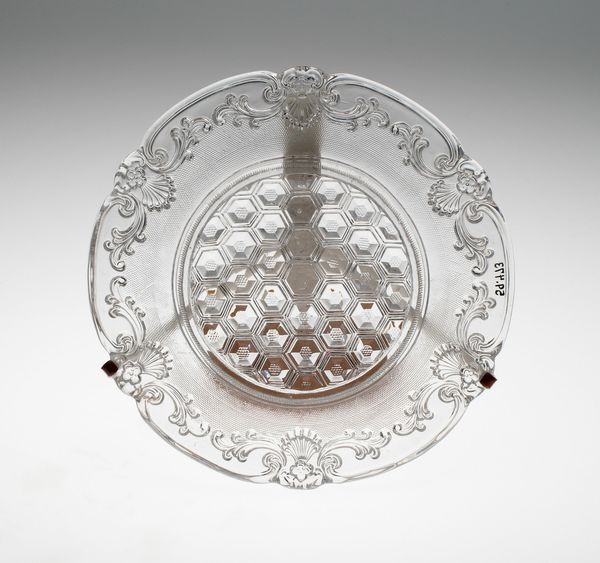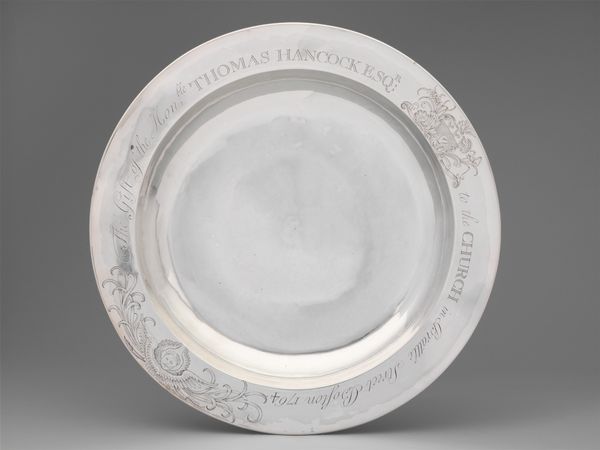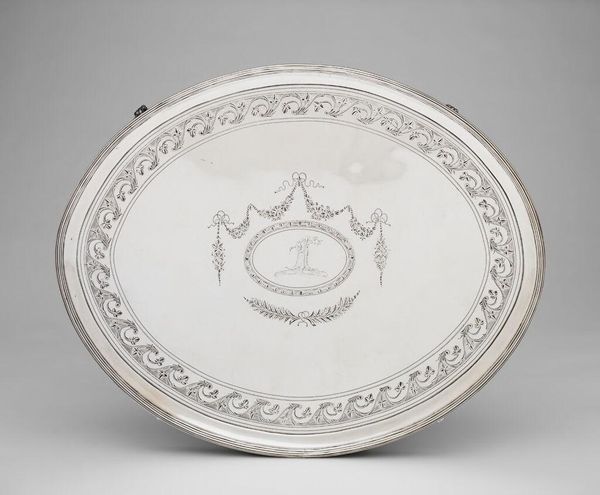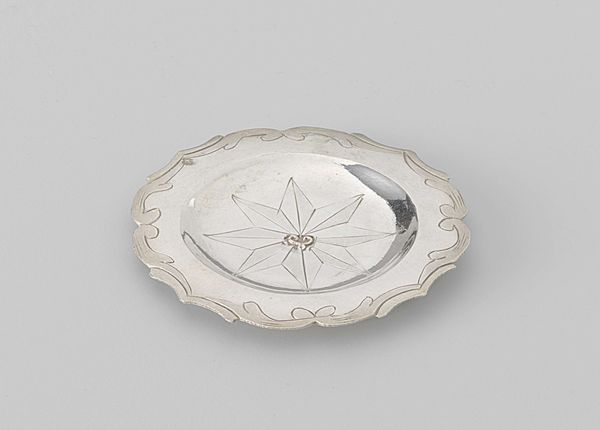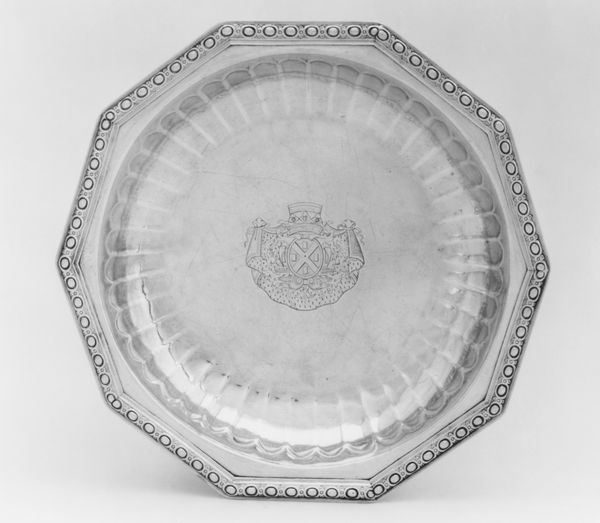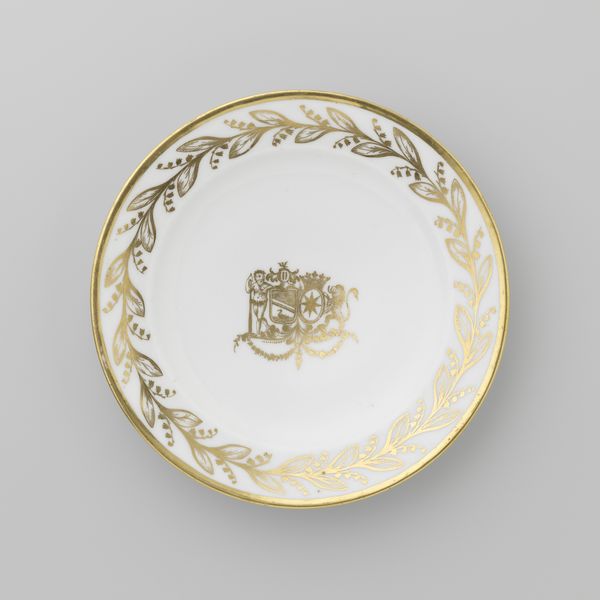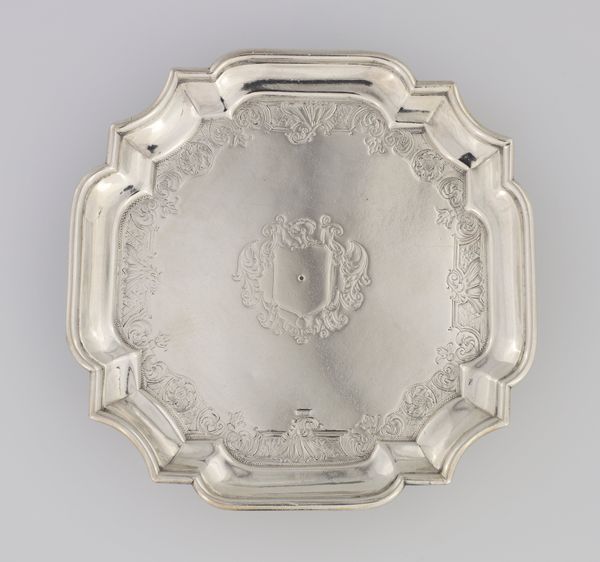
silver, metal
#
silver
#
metal
#
round design
#
vessel
#
decorative-art
Dimensions: 3.2 × 19.3 cm (1 1/4 × 7 5/8 in.)
Copyright: Public Domain
Curator: Here we have a late 18th-century salver crafted by Joseph Richardson Jr., dating circa 1788 to 1790. It's a striking example of American silver work, currently residing here at the Art Institute of Chicago. Editor: Oh, it’s lovely, a real jewel. So pristine and refined! There’s something about the airy fretwork rim that gives it such a light, almost ethereal feel. You could imagine it catching moonbeams. Curator: Yes, the pierced gallery surrounding the edge adds a certain delicacy. It really draws attention to the circular form and the mirrored surface. Silver as a material carries so much social weight— a product of mining, labor, refinement, and ultimately consumption. Editor: Exactly! It whispers stories of candlelight dinners, perhaps precarious stacks of macarons, or clinking glasses of Madeira... what untold histories this shining surface must reflect! Though, admittedly, I immediately picture the silversmith's hands shaping this thing - a highly skilled person. Curator: That's precisely the point. Joseph Richardson Jr. came from a long line of Philadelphia silversmiths, learning the trade from his father. Knowing its crafted locally tells us more about consumption and production practices specific to North America at the time. Editor: Knowing that it comes from this multigenerational trade, you just know it's built with an expectation to last... How interesting, because now, here it is displayed as a prized object! It makes one think about changing perceptions and shifting social significance... Curator: Indeed. And what about the engraved decoration in the center? It's a beautiful monogram surrounded by laurel leaves and topped with a ribbon bow, hinting at a specific family history or perhaps even a celebration of some kind. Editor: Ah yes! You know, looking at the engraving gives me the sense of a kind of 'personal touch' – but at the same time feels impersonal, detached, almost clinical. Maybe that's just because I can't recognize its symbolism... What's so interesting to me is how these forms act as containers, not just for precious substances but, most significantly, culture, too. Curator: Well, this piece speaks volumes about artistic skill and also class and society at that moment. A real insight into our understanding about materiality and the processes involved in transforming something raw into a domestic treasure. Editor: Absolutely. It makes me realize how artworks really transcend time—reflecting on us through centuries and shimmering surfaces.
Comments
No comments
Be the first to comment and join the conversation on the ultimate creative platform.
